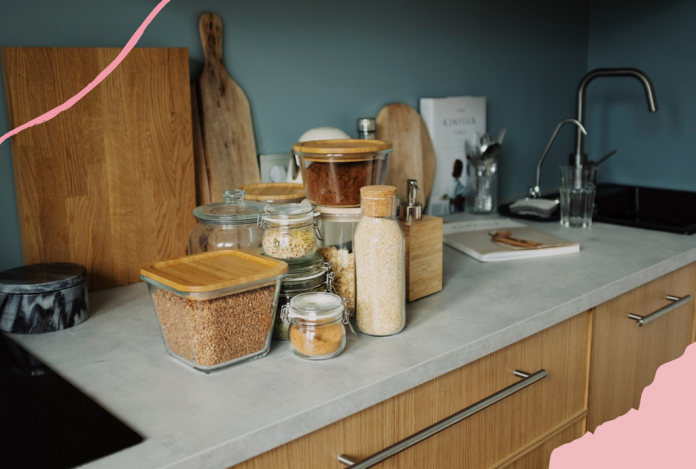Marketing 101: in-depth research is the hallmark of any great marketing campaign. In fact, comprehensive research should be the cornerstone of product and service development, too. Because unless you understand your audience, you can’t satisfy their needs, solve their problems or satiate their desires. And if you can’t do that as a business, then you might as well give up.
To do this, you’ll need to spend time learning more about your target demographic and your market as a whole. But how can food companies engage in effective research? Can you test your products without giving your competitors a glimpse of your new product range? How do you turn feedback into an effective food business marketing strategy? Where do you find willing research participants? How many more rhetorical questions can we get away with?
To shed some light and settle on the best methodology to help your food business gain the upper hand on its rivals, read on; here are 5 market research methods for food businesses.
Focus Groups
Let’s start by saying this; the hospitality industry is a unique beast, full of potential and pitfalls which just don’t apply to other industries. Counterintuitive to a whole host of other sectors, where hospitality and market research are concerned, there’s only so much you can achieve online. The very nature of a food business is in the sensory experience, and evaluation of your offering is often more succinctly achieved in person.
A focus group may be a fairly traditional form of market research, but it’s still widely used, particularly in the food and hospitality sector. By bringing individuals from your target audience together in one location, you’ll have the opportunity to present products, ideas, concepts and designs. Following this, you can open the forum for open-ended discussion and/or ask participants set questions about what they’ve seen, heard and sampled.
The focus group represents a great way to obtain qualitative data, but it can be time-consuming. Depending on how many people take part, you may only have a relatively small sample size. This means the process will need to be repeated numerous times to gather meaningful data on a large scale. But it is worth it for the first hand, sensory perspective.
Indeed, focus groups are one of the most effective sampling methods for niche food businesses that are targeting a relatively small audience. When your target demographic is small, the views and opinions of respondents tend to be narrower.
For start up food businesses and luxury food brands alike, focus groups offer an effective way to engage with individuals from your target audience on a one-to-one basis and obtain feedback directly from potential customers. In 2025, many companies are also running hybrid focus groups, combining in-person tastings with virtual participants who receive samples by post, broadening the reach without sacrificing that crucial sensory element.

Observation
Phew, that sounds simple. Spoiler alert: it isn’t. Observing your target audience may seem like a somewhat passive form of research but it can be surprisingly helpful when you’re developing a product, service or marketing strategy. As a covert form of research, it negates the possibility of participants providing false or inauthentic feedback. In addition to this, it prevents participants from unintentionally recalling incorrect information.
If you ask someone why they chose a particular product, for example, they could overthink the question and give you a false insight into their consumer behaviour. In reality, it’s likely that a significant element of their decision-making process was made subconsciously. By simply observing consumer behaviour, there’s so much to be learned about decisions made in the natural habitat of the shop or restaurant floor.
With observation, however, you are able to see your target audience behaving completely naturally. Although you won’t necessarily get the ‘why?’ behind their behaviours, you will get the ‘what’ and the ‘how’, and gain the opportunity to track their purchase behaviour and get an insight into how they shop and eat.
As food and drink products are routinely sold in stores, this is a great option for food companies. While analytics will allow you to follow the customer’s journey online, covert observation gives you key insights into in-store behaviour. By combining these two methodologies, you can learn a substantial amount about how your target audience approaches food-related purchases, and gain a more implicit understanding of the UK hospitality sector, too.
Mystery Shopping & Retail Audits
If you’re a food or drinks brand selling through retailers, cafes or restaurants, you’ll know that getting your product on shelves is only half the battle. Is it actually being displayed correctly? Is it priced as agreed? Is it even in stock? This is where mystery shopping and retail audits come into play.
Mystery shopping involves sending trained evaluators to pose as regular customers, assessing everything from product visibility and staff knowledge to the overall customer experience. For food businesses, this might mean checking whether your artisan crisps are positioned at eye level as negotiated, or whether bar staff are recommending your craft beer when asked for suggestions. It’s real world intelligence that no amount of spreadsheet analysis can replicate.
Retail audits take a more systematic approach, with field teams visiting multiple locations to gather data on shelf placement, stock levels, promotional compliance and competitor activity. For FMCG brands distributing across dozens or even hundreds of stores, partnering with a retail auditing agency can provide the scale and objectivity needed to keep tabs on your retail presence without stretching your internal team thin. These agencies combine trained personnel with technology platforms that deliver real time data, giving you actionable insights rather than just raw numbers.
Whether you’re a small batch hot sauce maker who’s just landed a listing with a major supermarket, or an established brand wanting to ensure promotional displays are being executed correctly, mystery shopping and retail audits offer ground level truth that’s hard to argue with.

Surveys
In the digital era, conducting market research surveys is easier than ever. This means they can be carried out at minimal cost, which is perfect for smaller companies that are working to a tight budget. Furthermore, surveys can be carried out quickly and the data made available immediately. If you need urgent feedback before finalising a prototype or making last-minute changes to a design, an online survey will allow you to obtain the data you need in a matter of hours or days.
Although food companies can use online imagery and videos to showcase designs to participants, your surveys can gather additional information too. By shipping goods to willing participants, for example, you can give them the chance to sample your products before submitting their feedback. Be warned that responses will usually be skewed in favour of positivity here (due to the ‘gifted’ nature of the sample), so don’t simply go for a YES/NO or ranking survey answer system. Instead, ask for description and detail.
While this is a little more resource-intensive than online-only surveys, it is more cost-effective than implementing face-to-face research sessions and still provides useful and insightful data. Tools like Typeform, SurveyMonkey and Google Forms have made survey creation incredibly accessible, while platforms such as Attest and Vypr (the latter specifically designed for food and drink brands) offer access to pre-vetted consumer panels, speeding up recruitment considerably.
Sample The Competition
As if you needed an excuse. But knowledge is power, as they say, and to expand yours in the name of market research, you’re going to need to understand what makes your competition tick. And, of course, how they taste.
Focus on your competitors’ strengths and weaknesses, equally, to help you get the measure of your rivals in an impartial way. In many cases, and though it might feel illogical, you should celebrate their achievements; it shows success in the market and presents the potential for you to improve on their offering and clean up. This, of course, is only possible if you get to know your competitors inside and out.
Beyond the obvious taste tests, keep an eye on how competitors are positioning themselves online. Track their social media engagement, sign up to their newsletters, and monitor review sites to see what customers are praising or complaining about. Tools like Brandwatch or even simple Google Alerts can help you stay informed without dedicating hours to manual research each week.
Check out this useful article on four ways to use market research to size up your competition for more on the subject. Though it doesn’t only refer to food businesses, the logic can be applied here to more niche market segments.
The Bottom Line
Unless you understand your target audience, you’re going to struggle to sell to them. When buying food and drink, in particular, people are driven by emotion, loyalty and intuition. By conducting accurate research, you can learn more about your future customer base. This invaluable information will help to ensure your products and services provide genuine value to your core demographic. Similarly, you’ll find that the information you collate helps you to create innovative and effective marketing campaigns for your own brand.
The best approach? Don’t rely on a single method. Combine qualitative insights from focus groups with quantitative survey data, layer in observational research and retail audits for real world context, and keep a close eye on what your competitors are up to. What separates food businesses that thrive from those that fail is treating market research not as a one-off exercise, but as an ongoing conversation with their customers.





